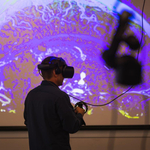Transforming Academic Outcomes Through Innovation: Recent Study, Powered by Perspectus, Inc., Shows a New Way to Solve One of Higher Education’s Oldest Problems

FORT COLLINS, Colo.–(BUSINESS WIRE)–A new peer-reviewed study published earlier this year in the Medical Science Educator Journal is turning heads amongst futurist, video gamers and college professors alike. The study, conducted by a team of researchers at Colorado State University, focused on using virtual reality curriculum to replace course activities that were previously done in-person at the university’s cadaver lab.
Higher education has struggled for decades to incorporate new technologies and teaching methods that can keep up with student expectations for engagement. Educators are challenged to impress a generation of students who have grown up with on-demand food delivery, highly realistic video games, and streaming channels that feed fresh content based on individual preferences. While technologies aimed at making education more engaging have become prevalent in the last 20 years, educators have struggled with the lower quality learning outcomes they produce, especially for highly technical science subjects like anatomy.
The team of CSU researchers, led by Dr. Tod Clapp, identified a potential solution. In their study, students who took their anatomy labs online using the VR curriculum showed the same, if not slightly better, test results than students from the in-person cadaver labs. Further, the study concluded that the online VR anatomy content “maintained the rigor of traditional gross anatomy laboratories without negatively impacting student examination scores and provided a high level of accessibility, without compromising learner engagement.”
With the number of higher education students enrolled in online courses projected to double in the next 3-4 years*, the study results also provided some new hope for educators that have been thus far skeptical about the quality of training online education can deliver, especially for hands-on fields like medicine.
Dr. Clapp expected these results, as he has been using VR in his classroom for the last 5 years, but he thinks the data can encourage other universities that have been hesitant to innovate. “We couldn’t be happier with the results,” he said. “It’s important as educators to stay relevant and explore the latest technologies and teaching tools. This study validates the impact VR can have not just on student engagement, but also outcomes, and the ability to combine outcomes with something students love is every teacher’s dream.”
The technology provider used for the study is Perspectus Inc., a Colorado-based startup developed by a team of higher education and technology professionals. “This is the future,” said Perspectus’ CEO Stephen Tober. “Higher education and healthcare need cost-effective solutions that deliver enhanced results. As proven in the research, our cutting-edge VR technology enables the experts (professors and doctors) to easily customize their own content so that they can teach patients and more effectively prepare the health science students that will become our future clinicians.”
Additional Information:
Link to academic study: A Large-Scale, Multiplayer Virtual Reality Deployment: A Novel Approach to Distance Education in Human Anatomy | SpringerLink
*Source: https://research.com/education/online-education-statistics
Contacts
Perspectus:
https://perspectustech.com/
Erick Miranda, EMiranda@Perspectustech.com


